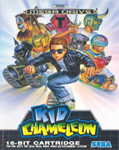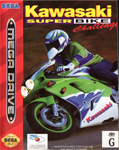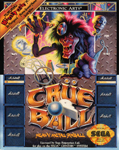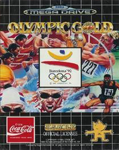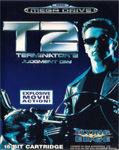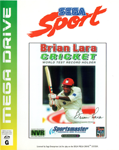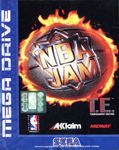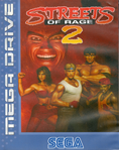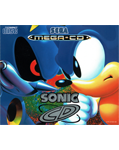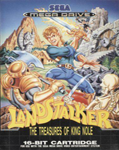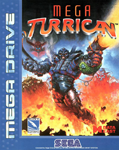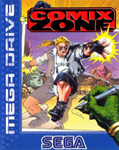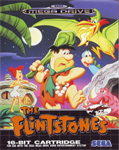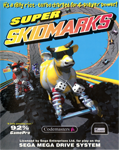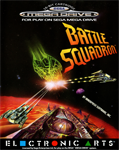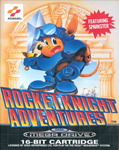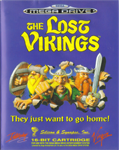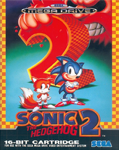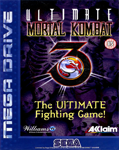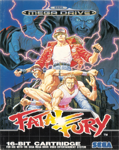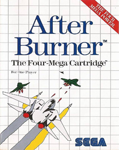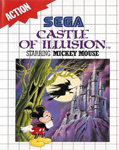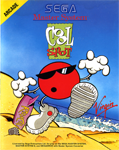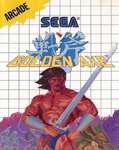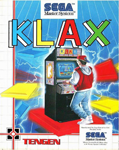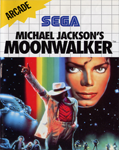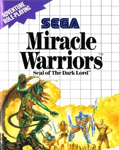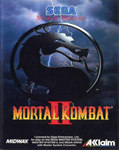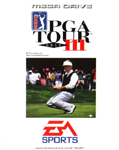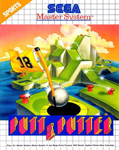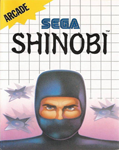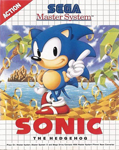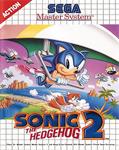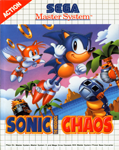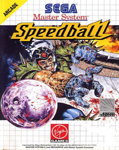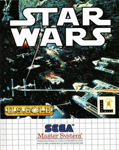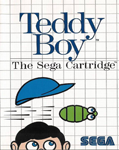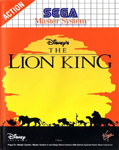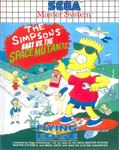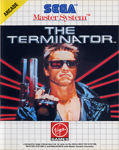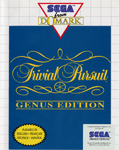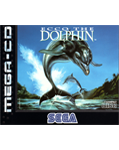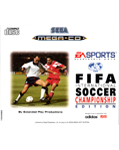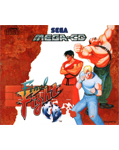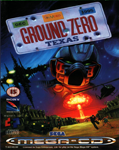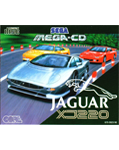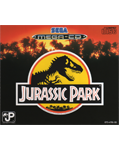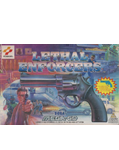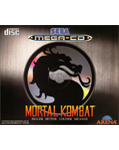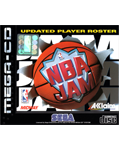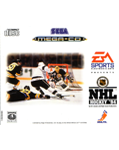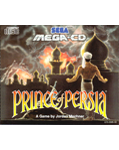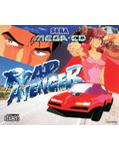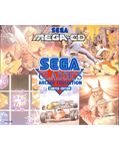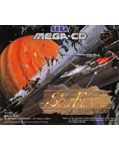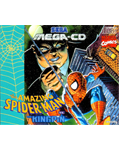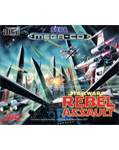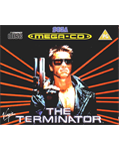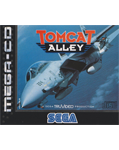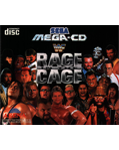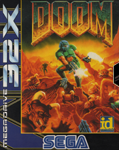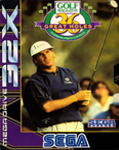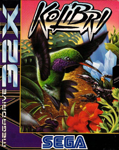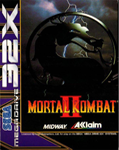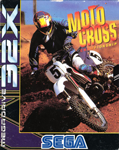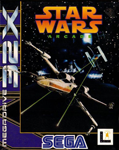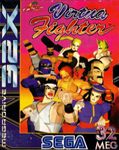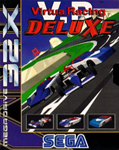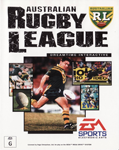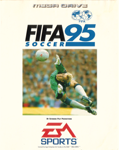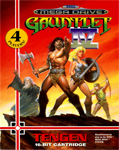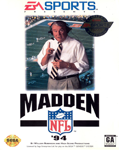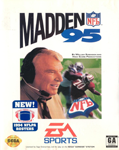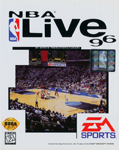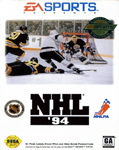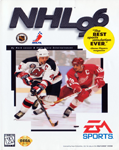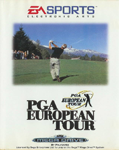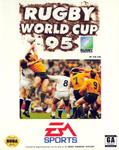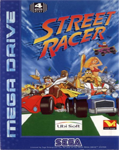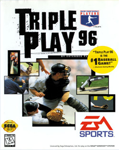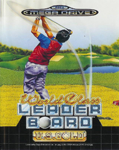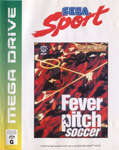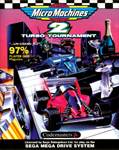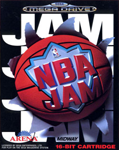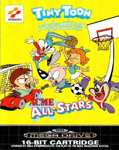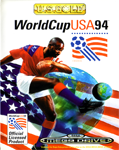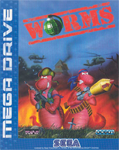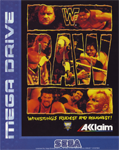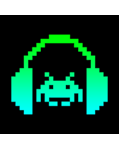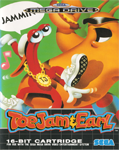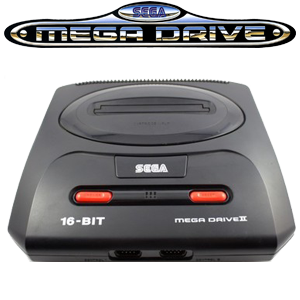
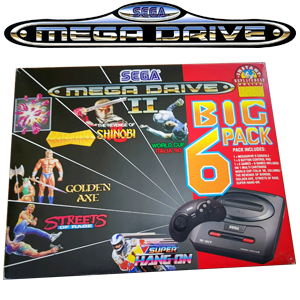
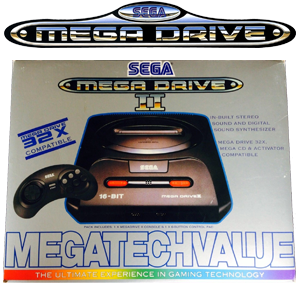
Sega Mega Drive II Console
Specifications (From Cyberia PC)
- CPU: 16-bit Motorolla 68000 (7.68MHz)
- RAM: 64KB
- Graphics: Dedicated graphics processor
- Colors: 512 (64 on screen)
- Sprites: 80
- Resolution: 320x224 pixels
- Sound: 6 channel stereo. TI 76489 PSG, Yamaha YM 2612 FM chips
From Cyberia PC
This update of the original Mega Drive was released in 1989. There were several changes in this version including the removal of the slide volume adjuster, the headphone jack, the 9-pin EXT port and the RF out port. The unit is in a smaller, lighter and slicker casing and the Power button has changed from a slide switch to a push switch.
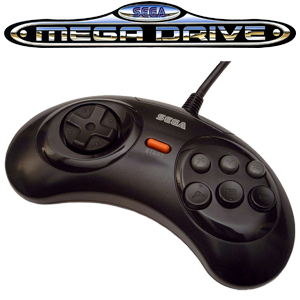
Sega Mega Drive 6-Button Controller
From SEGA Retro
The Six Button Control Pad became the de facto controller for the Sega Mega Drive, replacing the standard Control Pad internationally around 1993/1994. It is officially known as the 6 Button Arcade Pad in North America and the Fighting Pad 6B in Japan.
There are two main types of Six Button Control Pad, a smaller model originally intended for Japan, and a larger one intended for the west. The differences in size are due to a perception that the Japanese and people living in similar Asian countries have genetically smaller hands - it is an idea that passed through to the Sega Saturn and even to the Xbox before the realisation it might have been easier to produce one single pad for all regions. Indeed the larger variant was phased out by the end of the decade to cut costs and the Japanese variant would replace it worldwide.
The Six Button Control Pad is functionally identical to the previous pad but features three extra face buttons (or "triggers"); X, Y and Z, placed above A, B and C. The START button was moved to the centre of the pad, similar to Nintendo's set of controllers.
In most regions the Six Button Control Pad was released with Street Fighter II': Special Champion Edition which made use of the six-button layout. Though the game had been released on the Super NES, it had to assign moves to the L and R buttons - the Mega Drive version is therefore more analogous to the original arcade version (and also means a separate arcade stick does not necessarily need to be purchased).
Some games do not function with the six button controller. To fix this situation, Sega added a MODE button on the top right of the controller. If held while the system is booting, the controller will revert back to a three button pad. Many six button games make use of the MODE button within play, bringing the total number of buttons to eight (plus a D-Pad). The Super NES also has eight buttons, meaning porting games between the two consoles was made much easier.
There are some minor aesthetic differences between models. Japanese control pads have blue START buttons, PAL models have red ones, and North America has grey ones.
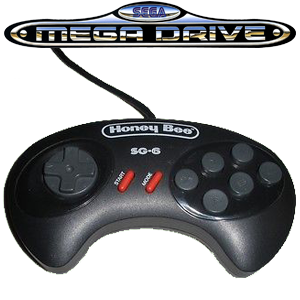
Sega Mega Drive Honey Bee Controller
From SEGA Retro
The SG-6 is a third party control pad released in the early 1990s by Honey Bee. It was distributed in the west under the Competition Pro brand as the Professional Control Pad SG-6.
The SG-6 is a standard six button controller.
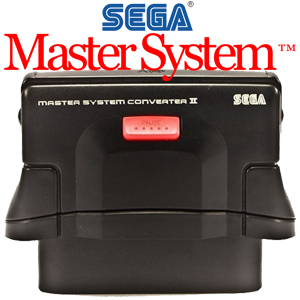
SEGA Master System Converter II
From Wikipedia
The Master System Converter II, was released only in Europe for use with the Mega Drive II.21 games are compatible with the SEGA Master System Converter II
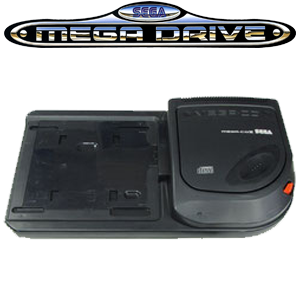
Sega Mega CD II
From SEGA Retro
The Mega-CD comes in many forms, but in all cases the hardware adds the capability of reading compact discs, technology which in the late 1980s and early 1990s, was becoming a more affordable storage option than the traditional video game ROM cartridge of previous console generations.
A traditional Mega-CD does not act as a stand-alone unit, and needs to be hooked up to a Mega Drive via the expansion port located on the right hand side of the console. Mega-CDs do, however, require their own AC adaptor, meaning that in order to play Mega-CD games, two sockets will be occupied by the upgraded console.
Though one would expect the Mega-CD to simply give the Mega Drive access to compact discs, it in fact adds extra processors, memory and audio features as well, all of which can only be utilised by CD software. The Mega-CD does not, however, solve the issue of graphics, which aside from the ability to scale and rotate sprites on the fly, remain identical to the standard Mega Drive system.
The Mega-CD also offers stereo sound RCA connectors. The Mega Drive on its own will output a monaural audio signal to the television, with stereo only being available through the headphone port located at the front of the console. An external connection from the Mega Drive to the Mega-CD will allow all games to play through the television in stereo.
The Mega-CD can be used in conjunction with a Sega 32X to run one of the six Sega Mega-CD 32X games. Alternatively it can be used to just play regular 5-inch or 3-inch audio CDs.
20 games are compatible with the Sega Mega CD II
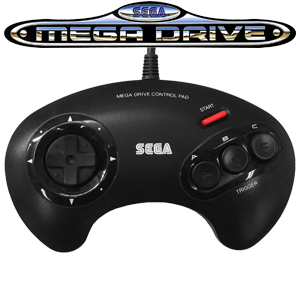
Control Pad
From SEGA Retro
The Sega Mega Drive Control Pad is the official controller of the Sega Mega Drive (or Sega Genesis in North America). Three button controllers are known officially as Control Pads in both North America and Europe, and SJ-3500s in Japan (following a system set up by the SG-1000). There are many "updates" and alternatives to this controller, the most notable being the Six Button Control Pad. This article covers only the basic three button variants.
Mega Drive control pads are the logical progression from Master System control pads, replacing 1 and 2 with A and B respectively, while adding an extra two face buttons, C and START to bring the total number of buttons to four. Also featured is a circular D-Pad, designed to allow for movements in eight directions. Unlike Nintendo's systems, the buttons (or "triggers" as they were initially called) are arranged in alphabetical order from left to right, a practise which would continue not only with future Sega consoles, but would inspire the controllers of the Neo Geo, 3DO and Xbox lines.
Mega Drive controllers are notable for being one of the first control pads to be ergonomically designed for the user's hands. Though improvements were made in the coming years, previous systems had cornered edges with their controllers, meaning they were often uncomfortable to hold after several hours of play. The Mega Drive controller is rounded, and has its buttons placed in easier to reach positions.
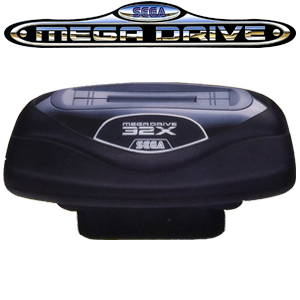
Sega Mega 32X
Released: 4th of December 1994
The Sega 32X is a large and heavy "mushroom-shaped" unit which plugs into the Mega Drive's cartridge slot. It was designed to be a permanent addition to a Mega Drive setup (unlike the Power Base Converter), acting as both a means to play specialised 32X cartridges, and as a passthrough device allowing normal Mega Drive games to be played. A provided plastic spacer ensuring it can fit inside most official versions of the Mega Drive console.
The Sega 32X plays its own cartridges which are designed to take advantage of the enhancements of the system. These cartridges which will not physically fit in a standard Mega Drive (nor any console produced since), and the setup is designed so as not to interfere with an attached Sega Mega-CD. Like the Mega CD, the 32X cannot function as an independent machine, and therefore always requires a powered Mega Drive to be present when in use.
Numerous factors led to the criticism over the 32X, but one of the major issues is encountered before the system is even switched on. The device requires its own AC adaptor, and a second physical connection to the Mega Drive console from the back of the unit. If the user also has a Mega-CD, this means no less than three power adapters are required (plus a fourth for a television). Both the AC adaptor and 32X Connector Cable are bespoke units - the AC adaptor is more common as it is identical to that seen with the Mega Drive 2 (though is not often covered by universal AC adaptors), but the 32X connector cable is unique to the 32X and was not sold separately (though third parties variants exist).
As an aside, the 32X's video encoder is of a slightly higher build quality than those usually found in later iterations of the Mega Drive, potentially resulting in a slightly clearer image when playing Mega Drive titles.
Furthermore, Sega's AC adaptors of the day were designed so that the transformer was located around the plug area, resulting in several bulky units obstructing surrounding sockets. Due to the extra space required just to plug the console into the wall, Sega eventually released their own Sega Power Strip in North America.
The 32X brings significant visual upgrades to the Mega Drive with inclusion of a 32X VDP, allowing the machine to display up to 32,768 on-screen colours (versus the usual 64 seen in Mega Drive titles) and render more 2D sprites at any given time. Combined with an added two Hitachi SH-2 32-bit RISC processors (also used for the Saturn), it is better suited to 2D scaling and rotation, and is capable of rendering texture-mapped 3D graphics.
Audio capabilities were also upgraded, including the addition of a PWM audio chip offering extra sound channels and QSoundtechnology, enabling multidimensional sound that allows a regular stereo audio signal to approximate the 3D sounds heard in everyday life (similar to binaural recording).
The 32X is compatible with the Sega Mega-CD, allowing the user to play one of six enhanced Sega Mega-CD 32X games. Its ability to access a wider palette of colours allows for higher quality full motion video than a standard Mega-CD, whose FMV games are in turn often derided for their lack of colour and detail.
Contrary to popular belief, the Sega 32X doesn't employ any regional lockout technology per se, instead relying on the region of the Mega Drive to determine the region of the unit. It does however have a set Genlock frequency which stops 50Hz (PAL) games from working on 60Hz (NTSC) units and vice versa. Due to the 32X only differentiating between frequencies and not region, the Japanese Super 32X and Genesis 32X are identical, and will work on either NTSC console. Much like region modifications on the Mega Drive and Saturn, this is easily changed with slight modifications to the unit, allowing for universal support of all games.
8 games are compatible with the Sega Mega 32X
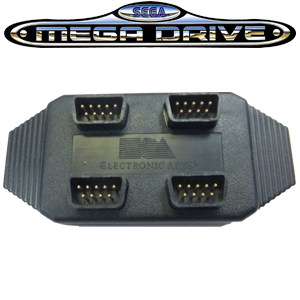
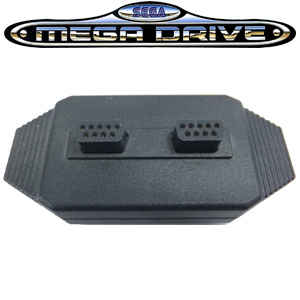
Electronic Arts 4 Way Play
Released: 1st of September 1993
The 4 Way Play is an accessory created by Electronic Arts for the Sega Mega Drive. It allows for up to four players to play together in certain games. Largely, mostly games designed by EA itself supported it. When first released, Sega's official Team Player multi-player adaptor was not compatible with 4 Way Play games. Later releases fixed this incompatibility issue.
The device itself plugs directly into the system and has no wires sticking out and attaches to the front of the system like an extension. To attach like this it plugs into both controller ports. Due to the way it is plugged into the system it is incompatible with devices such as the Sega Multi-Mega and X'eye.
Compatible Games
- Australian Rugby League (1994)
- Barkley: Shut Up and Jam 2 (1995)
- Bill Walsh College Football (1993)
- Bill Walsh College Football 95 (1994)
- Coach K College Basketball (1995)
- College Football USA 96 (1995)
- College Football USA 97 (1996)
- Dino Dini's Soccer (1994)
- Elitserien 95 (1994)
- Elitserien 96 (1995)
- FIFA Road to World Cup 98 (1997)
- FIFA International Soccer (1993)
- FIFA Soccer 95 (1994)
- FIFA Soccer 96 (1995)
- FIFA Soccer 97 (1996)
- Gauntlet IV (1993)
- General Chaos (1994)
- IMG International Tour Tennis (1994)
- Madden NFL '94 (1993)
- Madden NFL '95 (1994)
- Madden NFL 96 (1995)
- Madden NFL 97 (1996)
- Madden NFL 98 (1997)
- Mega Bomberman (1994)
- MLBPA Baseball (1994)
- Mutant League Hockey (1994)
- NBA Live 95 (1994)
- NBA Live 96 (1995)
- NBA Live 97 (1996)
- NBA Showdown (1994)
- NHL '94 (1993)
- NHL 95 (1994)
- NHL 96 (1995)
- NHL 97 (1996)
- NHL 98 (1997)
- PGA European Tour (1994)
- PGA Tour Golf III (1994)
- Rugby World Cup 95 (1994)
- Street Racer (1995)
- Triple Play 96 (1995)
- Wayne Gretzky and the NHLPA All-Stars (1995)
- World Class Leader Board (1992)
16 games are compatible with the Electronic Arts 4 Way Play
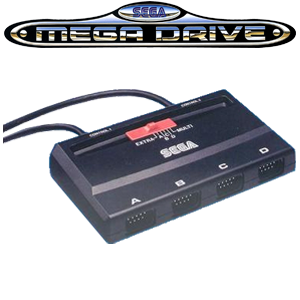
SEGA Mega Drive Multiplayer
Released: 1st of January 1993
Variations
The original model of the Team Player (MK-1654) and its international equivalents use a single connector cable, leaving an additional port on the console free for a fifth player. Alternatively, the second port could house a further Team Player, for up to 8 simultaneous players. When not in "MULTI" mode, the Team Player's switch can be used to specify which controller is mapped to the Mega Drive's first controller port, so that the player is able to switch between control pads and the Sega Mouse without detaching or connecting controllers. This original version competed directly with Electronic Arts's 4 Way Play for support, with many of that publisher's titles supporting only their adapter, while other publishers preferred Sega's device.
To resolve this split in the platform's user base, Sega released a second Team Player model (MK-1647) which features two connector cables and support for EA's previously "exclusive" games. To use the "EXTRA" mode which supports these titles, both connectors must be plugged into the Mega Drive's controller ports, while Team Player-compatible titles still need only one connector inserted, as in the original model. The improved software compatibility and the use of cables rather than connectors molded directly into the adapter put the MK-1647 at an advantage over the 4 Way Play, which required both controller ports to be the same distance apart (thus preventing it from working with the CDX or X'eye).
Compatible games
- Note: The titles listed below are directly compatible with the Team Player in "MULTI" mode. 4 Way Play games are also compatible with the second revision's "EXTRA" mode.
Mega Drive
- ATP Tour Championship Tennis
- Barkley Shut Up and Jam 2
- College Football's National Championship
- College Football's National Championship II
- College Slam
- Columns III: Revenge of Columns
- Dragon: The Bruce Lee Story
- ESPN National Hockey Night
- FIFA International Soccer
- Fever Pitch Soccer
- Gauntlet IV
- Madden NFL '94
- Mega Bomberman
- Micro Machines 2: Turbo Tournament
- NBA Action '94
- NBA Action '95 Starring David Robinson
- NBA Hang Time
- NBA Jam
- NBA Jam Tournament Edition
- NBA Showdown '94
- NCAA Final Four Basketball
- NFL '95
- NFL 98
- NFL Quarterback Club
- NFL Quarterback Club 96
- Pepenga Pengo
- Puzzle & Action: Ichidant-R
- Puzzle & Action: Tant-R
- Street Racer
- The Lost Vikings
- Tiny Toon Adventures: ACME All-Stars
- Ultimate Soccer
- Unnecessary Roughness '95
- WWF Raw
- Wayne Gretzky and the NHLPA All-Stars
- World Championship Soccer II
- World Cup USA 94
- Worms
- Yuu Yuu Hakusho: Makyou Toitsusen
Mega-CD
- Dungeon Explorer
- ESPN NBA Hangtime '95
- ESPN National Hockey Night
- NBA Jam
- World Cup USA 94
32X
- Golf Magazine: 36 Great Holes Starring Fred Couples
- NBA Jam Tournament Edition
- NFL Quarterback Club
- WWF Raw
14 games are compatible with the SEGA Mega Drive Multiplayer
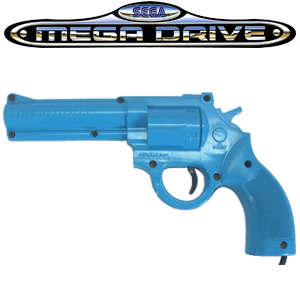
The Justifier
Released: 29th of October 1993
The Justifier is a light-gun peripheral for the Mega Drive manufactured by Konami produced specifically for Lethal Enforcers. A version was also made for the Super NES.
The Justifiers are shaped like revolvers (and are modeled after the Colt Python revolver), but are brightly coloured due to early 90s fears that light guns could lead to gun crime. They are controversial peripherals for other reasons too - namely the fact that they are incompatible with some games reliant on the Menacer, as Konami wanted accurate light guns for the console ports of the game and felt that the existing first party light guns (the Menacer and Nintendo's Super Scope for the Super NES) were not adequate enough to replicate the arcade experience. This was not much of an issue in Japan, where the Menacer was never sold. Lethal Enforcers and its sequel are only compatible with The Justifiers, and thus all versions of the first game came packaged with the peripheral.
The Mega Drive supports a maximum of two Justifier guns at once - the standard blue one, which plugs into controller port 1, and a pink one, which plugs into the blue Justifier with a 6-pin RJ-11 phone cord). The pink Justifier was only sold directly by Konami via a mail order offer. The pink Justifer is compatible with both, the Mega Drive and Super NES models of the blue Justifier. Because of this, the packaging for the second Justifier does not feature branding for either platform.
Like the Menacer and most other light-guns of the era, The Justifier relies on scanlines produced by CRT televisions, making them incompatible with newer LCD, Plasma or LED monitors.
Compatible Games
- Lethal Enforcers (Mega Drive, Mega CD)
- Lethal Enforcers II: Gun Fighters (Mega Drive, Mega CD)
- Snatcher (Mega CD)
- Mad Dog McCree (Mega CD)
- Mad Dog II: The Lost Gold (Mega CD)
- Who Shot Johnny Rock? (Mega CD)
2 games are compatible with the The Justifier
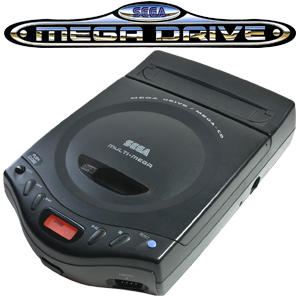
Sega Multi-Mega
Released: 1st of April 1994
From SEGA Retro
The Sega Multi-Mega is a special piece of hardware developed by Sega and released in the early-1990s. It is a Sega Mega Drive, Sega Mega-CD and personal CD player combined into one unit. The unit was released in North America as the Sega Genesis CDX as the "Mega Drive" naming scheme was not in use in that region, and in Brazil it was called the Multi Mega CDX.
Hardware
As with any home Mega Drive, the unit needs to be plugged into a television in order for Mega Drive and Mega CD games to be played. It must also be connected to a power supply to be used in this way, however, as a CD player it can also be run on battery power, as the unit was also designed to be portable. Due to the Mega Drive additions, the unit is larger and heavier than most other portable CD players on the market at the time.
The Multi-Mega uses the same power adaptor and A/V leads as the Mega Drive model II. These are connected to the right hand side of the unit. Also included is an 1/8" headphone socket, which works for both CDs and games, and a volume control. There is also a line out socket for hooking up to a hi-fi system.
The unit features the last version of the Mega CD Bios, v.2.21. Like the Mega CD and the Sega Saturn, it is compatible with CD+G discs.
The front of the unit has controller port 1 on the far left, a power button in the middle, and controller port 2 on the far right. This spacing breaks compatibility with Electronic Arts' 4 Way Play multitap peripheral, and the Remote Arcade System. The functions of both these peripherals can still be obtained through third-party accessories.
New to the Multi-Mega are CD controls seen on the top of the unit. From left to right these functions include; the open button for the CD lid, seek buttons for the CD player, a small LCD screen in the middle displaying the current track number (including which audio track it's currently playing in-game) (or ACCESS when loading a game), play/pause button, a stop button, and a small blue reset button.
In all cases the Multi-Mega was packaged with a 6-button control pad, a power adaptor, a Red-White-Yellow style A/V cable (probably an RF cable in Europe). North American bundles included Sega Classics Arcade Collection (which contains Streets of Rage, Columns, Super Monaco GP, The Revenge of Shinobi and Golden Axe), Sonic CD and Ecco the Dolphin with the console. In Brazil it was bundled with Night Trap.
The unit did not reach Japan as the Multi-Mega, but instead the design was licensed to Linguaphone, who rebranded the unit as the Linguaphone Education Gear. Very little is known about this version of the unit, though it can be assumed it was intended for education purposes.
Production of the Multi-Mega ceased when the Sega 32X hit the market, with Sega announcing that the Multi-Mega was a novelty item rather than a console designed for the mainstream audience. Multi-Megas were not designed to be used with the Sega 32X, but are fully compatible. They are also compatible with the Power Base Converter for Master System titles, and even the original design for the Model 1 will work as the end section hangs far away from the back of the system.
Despite not being a priority for Sega, the Multi-Mega's reduced price meant that it is often seen as a better deal than buying a Mega Drive and Mega CD separately, however its short production run means that Multi-Megas are often rarer and more expensive than standard Mega Drive and Mega CD consoles. Sega would later attempt to package a Mega Drive and 32X into one unit as the Sega Neptune, but this would never leave the prototype stage.
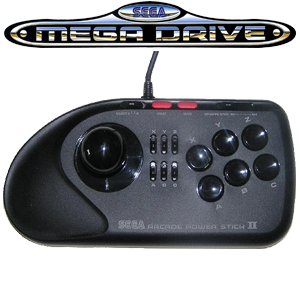
Arcade Power Stick II
Released: 1st of September 1993
The Arcade Power Stick 6B, known as the Arcade Power Stick II in Europe and 6 Button Arcade Stick in North America, is a six-button update to the Sega Mega Drive's Arcade Power Stick.
Like its predecessor, the Japanese release has a microswitched joystick, akin to those found in the arcade. Overseas versions and buttons use less reliable rubber inputs, similar to those found in standard Control Pads.

